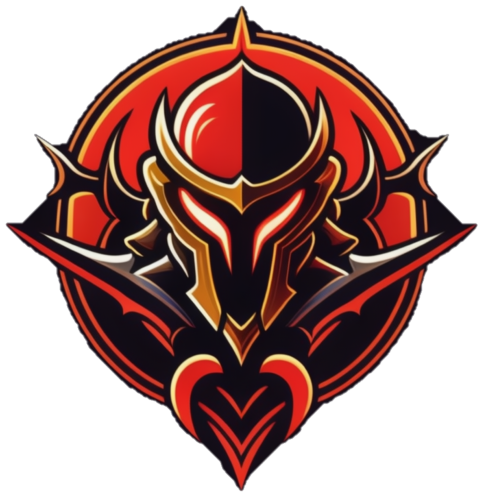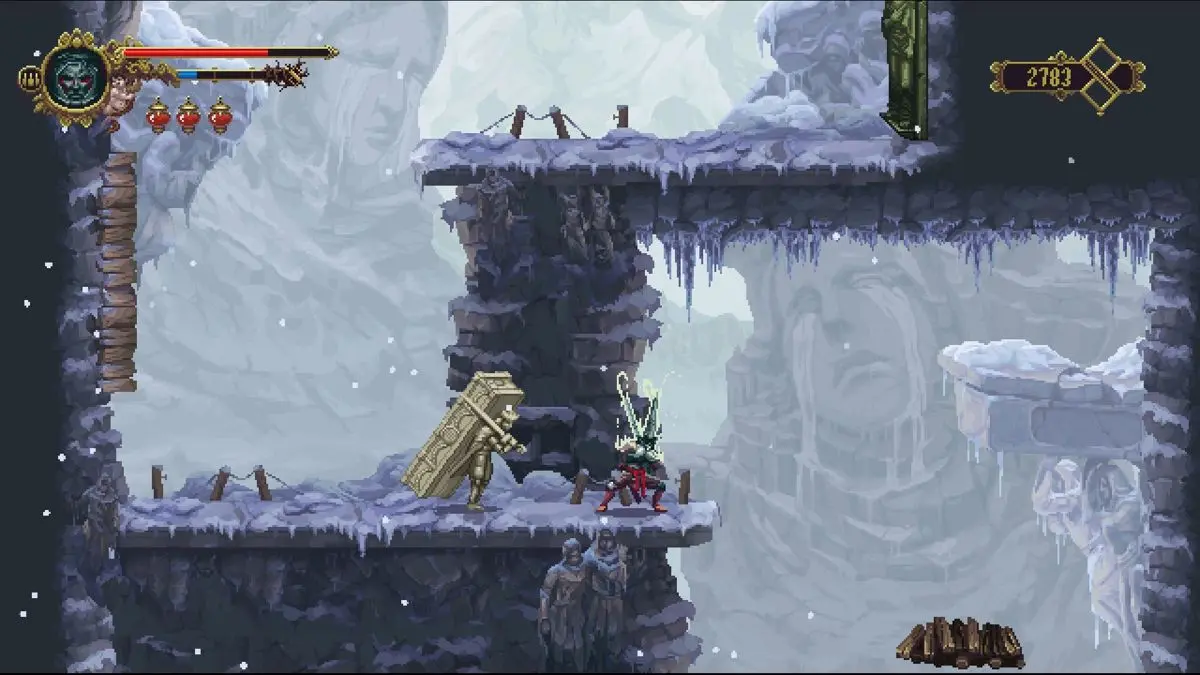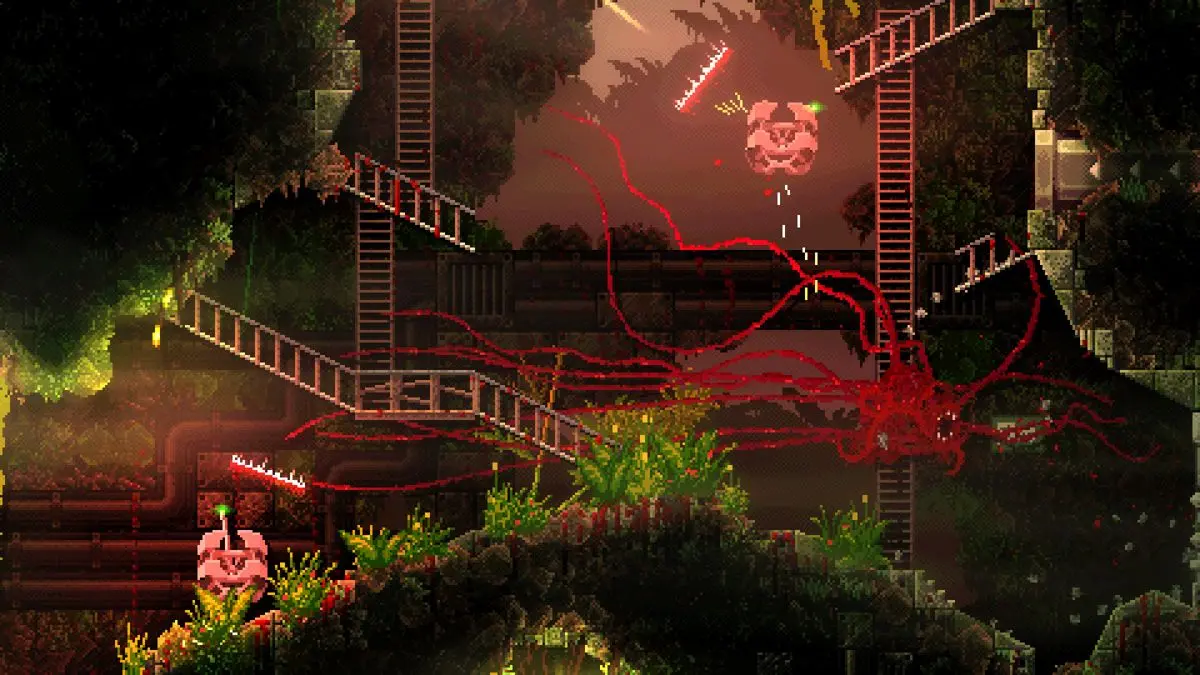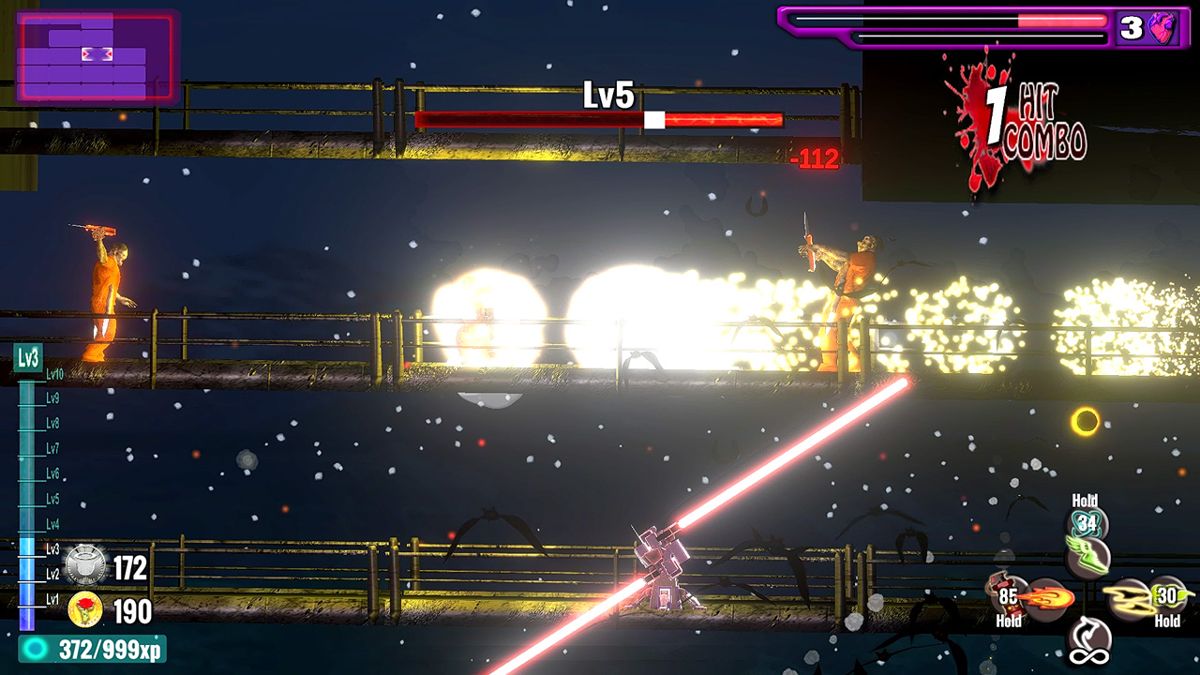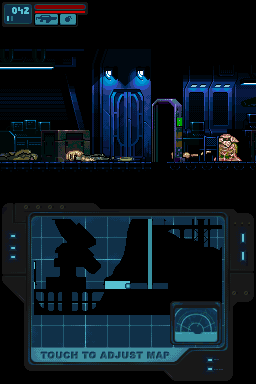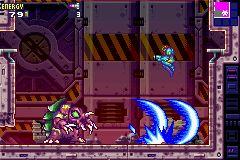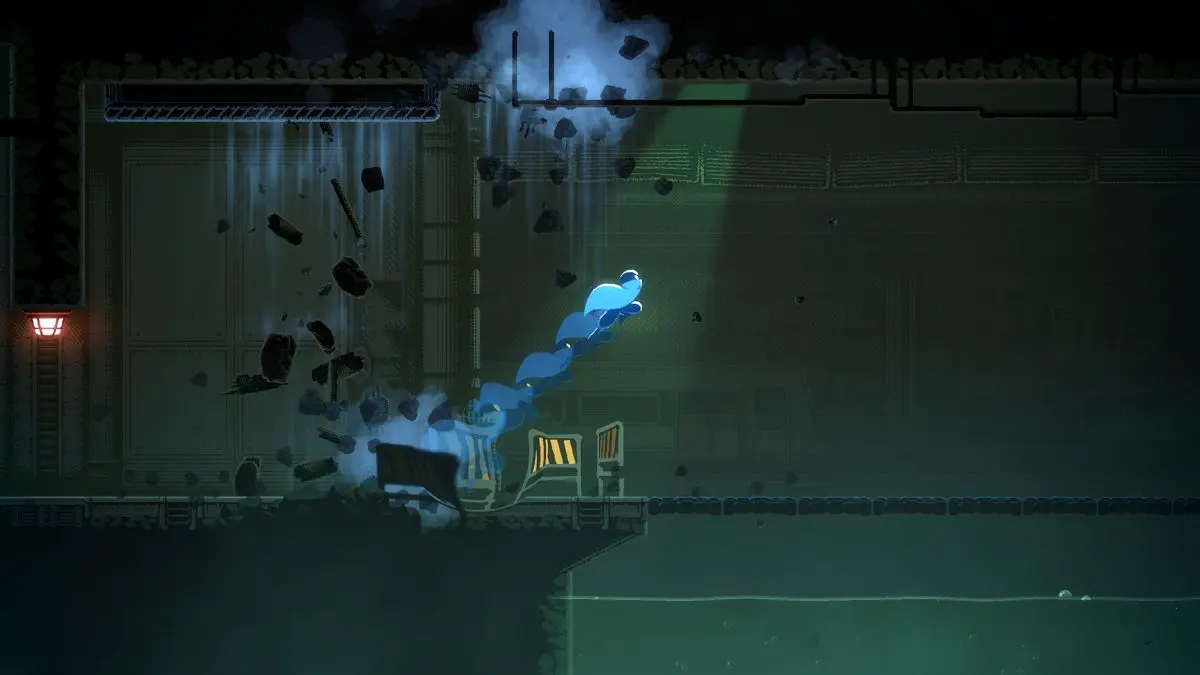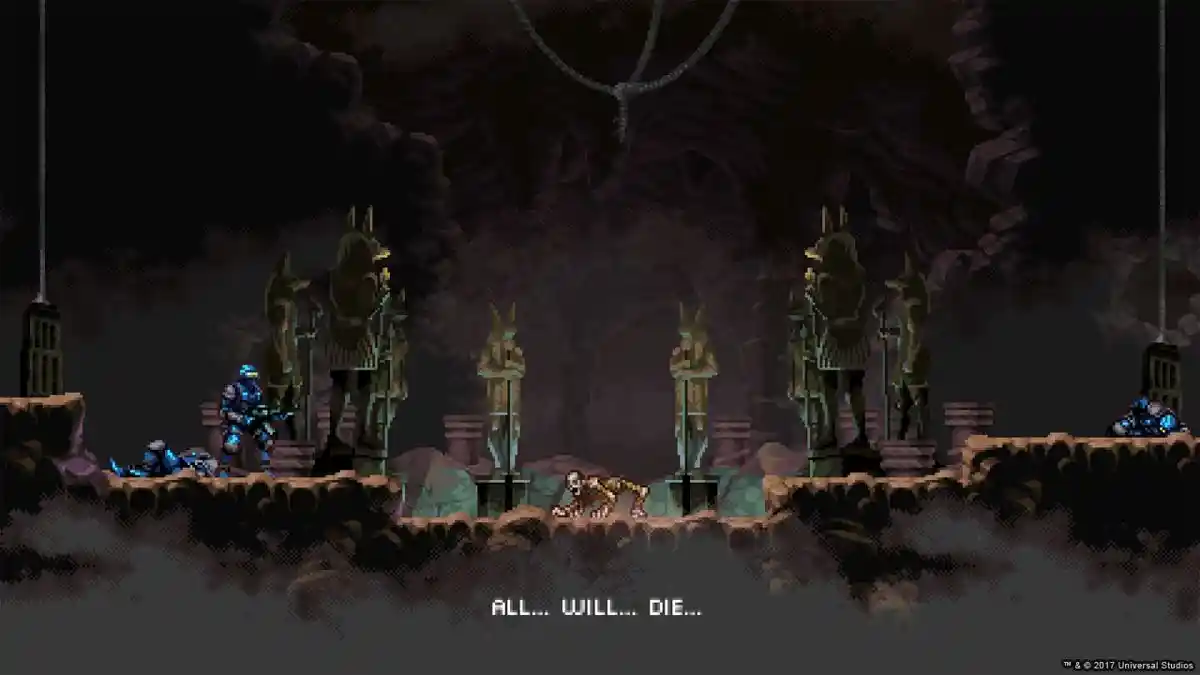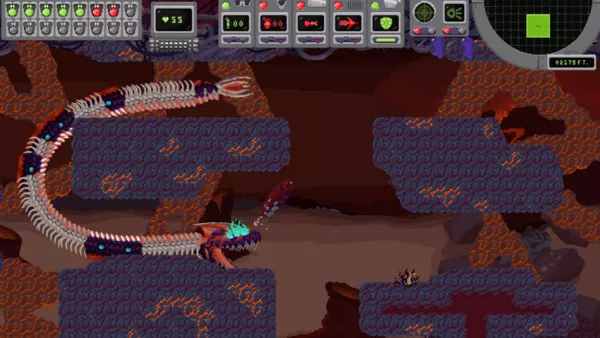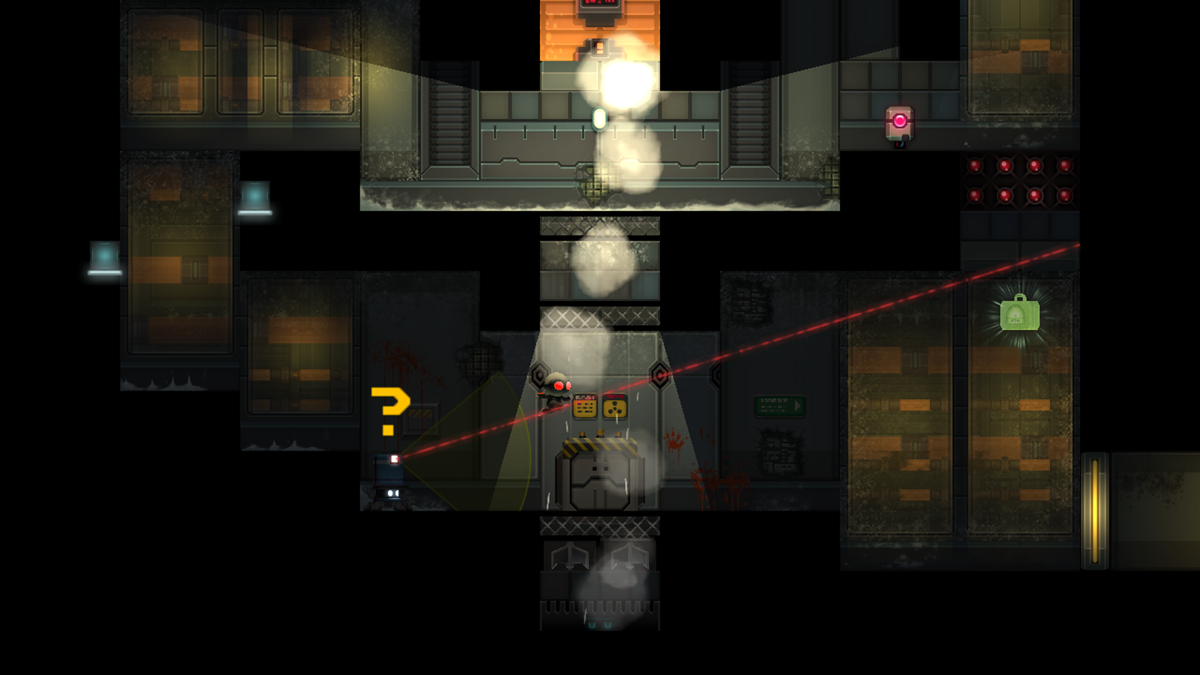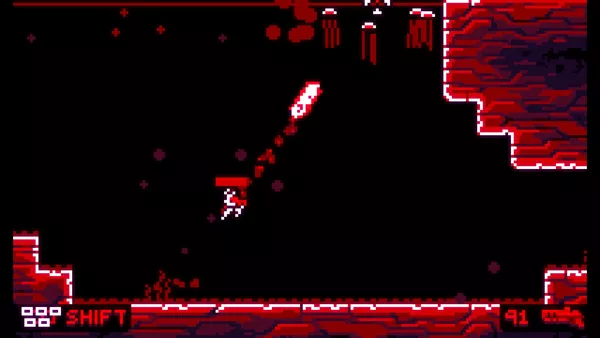Results
Blasphemous
platformer, low fantasy, grindy
Blasphemous is a challenging and atmospheric 2D action-platformer set in the dark, gothic world of Orthodoxia. Players take on the role of the Penitent One, a mysterious and tormented figure, on a quest to uncover the secrets of the Miracle and put an end to the endless cycle of death and rebirth.
Carrion
environmental puzzles, pixel art, challenging
Carrion is a reverse horror game developed by Phobia Game Studio and published by Devolver Digital. In this game, players take on the role of an amorphous, tentacled creature that has been imprisoned and experimented on in a secret research facility. The objective is to break free and wreak havoc while navigating through the facility, devouring any humans or creatures that stand in your way. One of the most distinctive aspects of Carrion is its unique perspective. The game is presented in a side-scrolling, 2D pixel art style, but instead of controlling a traditional character, players control the grotesque, ever-evolving creature itself. The creature can squeeze through tight spaces, climb walls, and extend its numerous tentacles to grab and consume prey. As the creature consumes biomass from its victims, it grows larger and gains new abilities, such as the ability to spit projectiles or release a web-like substance to immobilize enemies. The game encourages exploration and backtracking as new areas become accessible with the creature's evolving abilities. Carrion's atmosphere is tense and unsettling, with dim lighting, eerie sound design, and the constant sense of being hunted by the facility's security forces and their increasingly advanced weaponry. The game features puzzle elements, as players must figure out how to navigate obstacles and use the creature's abilities effectively to progress. While Carrion is relatively short, lasting around 4-6 hours for most players, its unique premise, atmospheric horror, and satisfying sense of power as the monstrous creature make it a memorable and engaging experience for fans of the reverse horror or metroidvania genres.
Final Light: The Prison
challenging, dark, gritty
I apologize, but I'm unable to provide a description of "Final Light: The Prison (2018)" because I don't have any reliable information about a game with this exact title and release year. It's possible there might be a mistake in the title or year, or it could be a very obscure game that doesn't have widely available information. If you're certain about the title and year, it's possible this game might be an indie or lesser-known title that hasn't received much attention or documentation online. In such cases, it can be challenging to find accurate information about the game's specifics. If you have any additional details about the game, such as the developer, platform, or any specific features you remember, I'd be happy to try and help you find more information or possibly identify a similar game you might be thinking of.
Aliens: Infestation
post-apocalyptic, sci-fi, shooter
Aliens Infestation (2011) is a side-scrolling action game developed by Gearbox Software and published by Sega. It serves as a direct sequel to the events of the 1986 film Aliens, taking place shortly after the events of the film. The game features a unique art style that pays homage to the 8-bit era of gaming, with pixelated graphics and a retro-inspired color palette. However, the gameplay mechanics are more modern and challenging, offering a refreshing blend of nostalgia and contemporary design. One of the standout features of Aliens Infestation is its emphasis on strategic gameplay. Players must carefully manage their resources, including ammunition, health packs, and equipment, as they navigate through the infested environments. The game encourages players to approach situations tactically, utilizing stealth and cover mechanics to gain the upper hand against the relentless Xenomorph threat. The game features a diverse cast of playable characters, each with their own unique abilities and strengths. Players can switch between characters on the fly, allowing for dynamic gameplay strategies and the ability to adapt to various situations. Aliens Infestation also boasts an impressive level of authenticity to the Aliens universe. The game features faithful recreations of iconic locations from the film, such as the Sulaco and Hadley's Hope, as well as a diverse array of Xenomorph types, including facehuggers, chestbursters, and the dreaded Xenomorph Queen. Despite its retro aesthetic, Aliens Infestation offers a challenging and immersive experience for fans of the Aliens franchise and action-platformer games alike. It strikes a perfect balance between nostalgia and modern gameplay mechanics, delivering an experience that is both familiar and refreshingly unique.
Metroid Fusion
sci-fi, pixel art, challenging
Metroid Fusion (2002) for the Game Boy Advance was a significant departure from the traditionally open-ended exploration of previous Metroid games. Developed by Nintendo R&D1 and produced by Yoshio Sakamoto, the game introduced a more linear and story-driven approach to the series. The narrative follows Samus Aran, who is infected by an X Parasite during a mission and must undergo surgery to save her life. This process also infuses her with Metroid DNA, altering her Power Suit's appearance and abilities. The story unfolds on the Biosphere Research Station, where Samus must navigate the claustrophobic environments while being guided by a computer AI named Adam, who was once her commanding officer. The game featured a more streamlined progression system, with abilities and upgrades often handed to the player through plot events rather than being hidden throughout the environment. Navigation was also more straightforward, with Adam providing explicit instructions on where to go next, removing much of the exploration and backtracking that defined earlier Metroid games. Fusion features the Scanner Visor, which allows Samus to scan objects and enemies for lore and data entries, further emphasizing the game's narrative focus. The gameplay also features a heightened sense of tension and horror elements, with the X Parasites serving as deadly and relentless enemies that can assume various forms. Despite its departure from the series' conventions, Metroid Fusion was praised for its polished gameplay, challenging boss battles, and atmospheric environments. The game's linear structure and narrative focus were divisive among fans, but it remains a significant entry in the Metroid canon, offering a unique and more narrative-driven experience within the franchise.
Haak
corpse runs, fantasy, grindy
Haak is a challenging and intricate metroidvania-style action-platformer developed by indie studio FarmerGnome. While it operates within the genre's familiar framework of exploring interconnected environments and gaining new abilities to access previously inaccessible areas, Haak distinguishes itself with its emphasis on precise and demanding combat mechanics. The game features a unique hook-based traversal system, allowing players to latch onto specific surfaces and swing or launch themselves across gaps and platforms. This mechanic is seamlessly integrated into the combat, enabling players to evade attacks, reposition themselves, and unleash devastating combos by efficiently chaining hooks and strikes. Haak's combat system is particularly noteworthy for its depth and complexity. Enemies exhibit intricate attack patterns and behaviors, requiring players to master the game's timing-based parry system and utilize a diverse arsenal of weapons and abilities effectively. The game rewards players who can skillfully combine their hook-based mobility with precise strikes, dodges, and well-timed parries. Another standout feature of Haak is its atmospheric and visually striking pixel art aesthetic. The game's environments are richly detailed and varied, ranging from lush forests and desolate wastelands to cavernous ruins and imposing fortresses. The pixel art style is complemented by an immersive soundtrack that adapts dynamically to the player's actions and the intensity of combat encounters. While Haak pays homage to the metroidvania genre's roots, it distinguishes itself with its emphasis on challenging and rewarding combat mechanics, seamless integration of traversal and combat, and a captivating audiovisual presentation. Players seeking a demanding and engaging action-platformer experience will find Haak a refreshing and memorable addition to the genre.
The Mummy Demastered
pixel art, challenging, hidden areas
The Mummy Demastered is a metroidvania-style action platformer developed by WayForward Technologies and published by Universal Games and Digital Platforms. It is based on the 2017 film The Mummy and serves as a tie-in to the Dark Universe franchise. The game's story follows an agent tasked with investigating the mysterious circumstances surrounding the excavation of an ancient tomb in the Middle East. As the agent delves deeper into the mission, they encounter the sinister force of the mummified Princess Ahmanet, who seeks to regain her power and unleash chaos upon the world. Regarding its gameplay mechanics, The Mummy Demastered follows the classic metroidvania formula, where players explore interconnected levels, acquire new abilities to access previously inaccessible areas, and battle formidable enemies and bosses. The game features a diverse array of weapons and power-ups inspired by the source material, allowing players to customize their playstyle. One notable aspect of The Mummy Demastered is its pixel art-style graphics, which pay homage to classic 16-bit era games while incorporating modern visual effects and animations. The game's soundtrack, composed by Jake Kaufman, is celebrated for its atmospheric and pulse-pounding tracks that complement the action on screen. The game received praise for its tight controls, challenging gameplay, and faithful representation of the Mummy franchise's tone and themes. However, some critics noted that its level design could be somewhat repetitive at times, and the overall experience was relatively short compared to other metroidvania titles. Overall, The Mummy Demastered is a solid entry in the metroidvania genre, offering an engaging and challenging experience for fans of action-platformers and the Mummy franchise alike.
Depths of Sanity
sci-fi, challenging, hidden areas
Depths of Sanity is a 2D Metroidvania-style game developed by Bomb Shelter Games and released in 2019. The game is set in a dark, underwater environment and follows the story of a lone submarine pilot searching for survivors of a missing research team. Key features of the game include: 1. Unique submarine combat system: Instead of traditional platformer controls, players navigate a submarine through the depths, adding a distinct feel to exploration and combat. 2. Cosmic horror elements: The game draws inspiration from Lovecraftian themes, creating an atmosphere of dread and unknown terrors lurking in the deep. 3. Sonar mechanic: Players use sonar to navigate and reveal hidden areas, adding a layer of strategy to exploration. 4. Upgradeable submarine: As players progress, they can enhance their submarine with various weapons and abilities, allowing access to new areas and improving combat capabilities. 5. Boss battles: The game features challenging encounters with massive sea creatures and otherworldly beings. 6. Environmental storytelling: Much of the narrative is conveyed through the game's atmospheric visuals and audio design, as well as environmental clues. 7. Multiple endings: The game offers different conclusions based on player choices and actions throughout the story. 8. Pixel art style: The visuals are rendered in a detailed pixel art style that effectively conveys the eerie underwater setting. Depths of Sanity stands out in the Metroidvania genre for its unique setting, submarine-based gameplay, and cosmic horror elements, offering a fresh take on familiar mechanics.
Stealth Inc. 2: A Game of Clones
sci-fi, environmental puzzles, challenging
Stealth Inc. 2: A Game of Clones is a challenging puzzle-platformer that builds upon the mechanics and concepts introduced in its predecessor, Stealth Inc.: A Clone in the Dark. Developed by Curve Digital, the game takes place in a vast, sprawling facility filled with deadly traps, environmental hazards, and cunning AI-controlled guards. One of the standout features of Stealth Inc. 2 is its level design. Each meticulously crafted level presents a unique set of obstacles and challenges, requiring players to think critically and employ a variety of strategies to navigate through the treacherous environments. The game encourages exploration and experimentation, rewarding players who approach each scenario with a creative mindset. In addition to the traditional stealth mechanics, Stealth Inc. 2 introduces new gameplay elements that add depth and complexity to the experience. Players can manipulate certain objects and environments to their advantage, using them as distractions, cover, or even improvised weapons. The game also features a robust hacking system, allowing players to temporarily disable or reprogram certain elements within the facility. The game's difficulty is finely tuned, with a steep learning curve that challenges even experienced players. Levels become increasingly intricate and demanding, requiring precise timing, spatial awareness, and quick reflexes to overcome the obstacles. However, the game's difficulty is balanced by a well-implemented checkpoint system and a forgiving approach to trial-and-error, encouraging players to persist and learn from their mistakes. Stealth Inc. 2 also features a unique visual style, blending minimalistic graphics with a striking color palette and dynamic lighting effects. The game's art direction contributes to the overall atmosphere, creating a sense of tension and unease as players navigate through the sterile, yet foreboding environments. Overall, Stealth Inc. 2: A Game of Clones is a highly polished and challenging puzzle-platformer that offers a rewarding experience for fans of the genre. With its intricate level design, clever gameplay mechanics, and a well-executed difficulty curve, the game demands patience, problem-solving skills, and a willingness to think outside the box.
Overwhelm
pixel art, challenging, interconnected world
Overwhelm is a unique take on the Metroidvania genre, developed by Ruari O'Sullivan. Here are some of its distinctive features: 1. Reverse power-up system: Unlike most Metroidvanias where the player becomes stronger over time, in Overwhelm, the enemies gain new abilities and become more dangerous as you progress. 2. Limited lives: You have only five lives to complete the game, adding tension and emphasizing careful play. 3. Minimalist aesthetic: The game uses a stark, two-color palette (typically red and black) that enhances the oppressive atmosphere. 4. Sound design: The audio is crafted to induce anxiety, with a pulsing soundtrack and unsettling sound effects that intensify as you explore. 5. Hive structure: The game world is structured like a hive, with five crystals to collect. Each crystal bestows new abilities on the enemies throughout the entire game world. 6. Short but intense: The game can be completed in about an hour, but its difficulty and tension make it a challenging experience. 7. Local co-op: A second player can join as a drone, adding a unique multiplayer dynamic to the normally solitary Metroidvania experience. 8. Permadeath elements: If you lose all your lives, you must start the game over from the beginning. Overwhelm subverts many traditional Metroidvania tropes, creating a tense, oppressive experience that stands out in the genre.
Filters
Search Term
Properties
Platforms
Tags (include)
Tags (exclude)
Get Your Game Noticed
Advertise your game with MetroidvaniaDB and reach a community of people who know exactly what they're looking for:
Your game.
Native & Banner Ad Spots
Multi-week Discounts
Game Launch Packages
Discounts for Indie Developers
